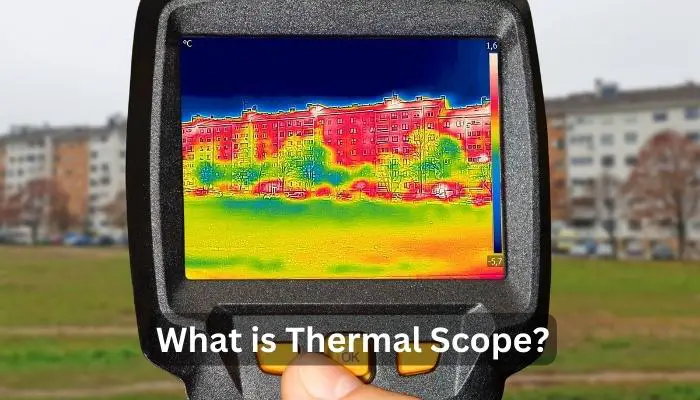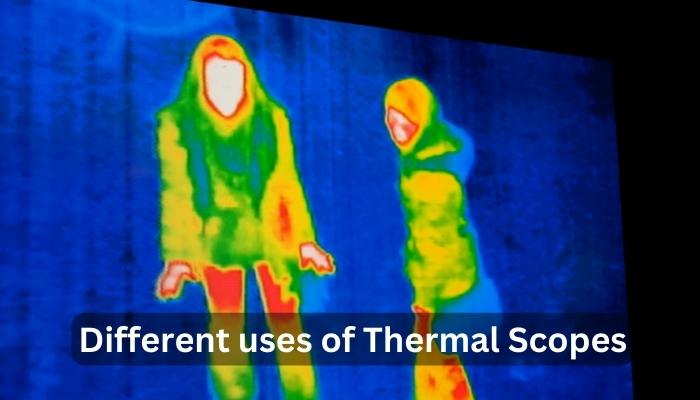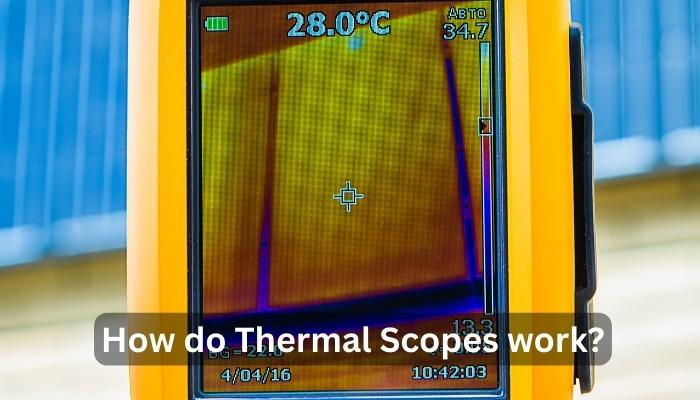Have you ever wondered how thermal scopes work? In this guide, we’ll cover What is Thermal Scopes and How do Thermal Scopes work? why they’re so useful to law enforcement, hunters, and civilians who are interested in keeping their families safe from harm.
We’ll also cover which features you should look for when purchasing one of these scopes and which types of scopes are the best fit for different uses, such as hunting or surveillance. Let’s get started!
Contents
What is Thermal Scope?

First, we need to know what exactly thermal imaging is. Both natural and man-made things emit infrared energy such as heat. This Infrared or mostly known as thermal imaging technology shows what is usually undetectable to the naked eye. This technology detects extremely small temperature changes in everything in sight.
Even in full darkness and adverse weather conditions, Thermal imaging enables users to view the invisible. Created for military use, it is now being used by security experts, law enforcement, and fire and rescue teams.
Different uses of Thermal Scopes:

Used in systems of surveillance and security thermal imaging cameras enable complete threat detection and smooth integration with bigger networks. In other words, security and surveillance systems supplement CCTV cameras.
- For Law Enforcement
Across long distances, Thermal imaging identifies dubious activities. Law enforcement and security teams can detect vegetation, smoke, fog, and dust with the help of thermal scopes. Officers can make better-informed choices with a faster approach in stealth mode. The various options are weapon-mounted cameras, Handheld cameras, tripod-mounted cameras, and vehicle-mounted cameras.
- Foretelling
In systems and facilities linked with industrial and electrical, breakdown may be impending. Therefore, for anticipating maintenance, Thermal imaging helps indicate ‘problem areas.
It is essential to recognize the light to comprehend thermal imaging. The energy of a light wave is proportional to its wavelength: shorter wavelengths contain more energy. Violet has the highest energy of any visible light, whereas red has the lowest. The infrared heat vision spectrum is located right beside the perceivable light spectrum.
Infrared light can be divided into three main classifications-
- Near-infrared (near-IR) – The wavelengths of near-IR vary from700 billionths to 1,300 billionths of a meter or from 0.7 to 1.3 microns.
- Mid-infrared (mid-IR) wavelengths span from 1.3 to 3 microns. A multitude of electrical equipment, including remote controls, utilize both near-IR and mid-IR.
- Thermal-infrared (thermal-IR) – with wavelengths extending from 3 microns to more than 30 microns, Thermal-IR possesses the majority of the infrared spectrum. Thermal infrared is emitted by an item rather than reflected from it, so it is quite distinct from the other two. All living things, as well as many nonliving things, use energy.
- Thermal technology detects differences in heat energy released by an item and its surroundings. Man and animals produce more heat than their surroundings. The difference in heat between the object and its surroundings is detected by the thermal scopes. Nowadays, rather than portraying plain black-and-white images, most current thermal scopes display the final image in a variety of color options.
How do Thermal Scopes work?

An optic lens in the thermal scope‘s infrared detector directs the released energy onto an infrared sensor. The focused light recorded by the lens is searched by A linear array of infrared-detector components on the scope. A temperature pattern known as a thermogram is generated when These infrared-detector devices are combined.
The signal processing unit receives these signals. A circuit board that turns signals into data is known as the Signal Processing Unit (SPU). The processing unit subsequently sends this data to the display, where it displays the image.
When can you use a Thermal Scope?
Initially, thermal scopes were exclusively used by military people. However, with technological advancements, they are now more available to people.
The thermal scope is well renowned for its ability to shoot nighttime creatures such as wild pigs and predators in the dark. A thermal scope can also identify animals through deep shrubs and heavy mist. Furthermore, strategic shooting is another use for which they can be used.
Thermal scopes may also be used by security officers for surveillance and by rescue teams to discover indications of life in a disaster. Thermal scopes are appealing because they function well in low visibility and other harsh situations such as mist or debris.
Factors to keep in mind when buying a thermal scope:
- The kind of Scope- Thermal scopes are classified into three types: monocular, binocular, and rifle scopes. One of the most easily carriable and compact forms of scope is the Monocular Scope. And one of the most efficient and biggest scopes is the riflescope. While in between the two the scopes fall into Binocular scopes.
- The Reach of the scope-A thermal scope’s range can be specified in yards. The broadness of the range will decide how far you can see while in the dark. For instance, a 300-yard range of scope will let you see a shorter distance, while a 500-yard range will enable you to view a longer distance.
- The scope’s resolution- A thermal scope’s resolution is determined in pixels. The image will have greater detail if the resolution is higher.
- The sensor’s kind- A thermal scope’s performance is influenced by the type of sensor it uses. Certain sensors are good at identifying items that are far away from the scope, while others are effective at spotting objects that are near to them.
The cost of the scope- Thermal scopes can cost anything from a few hundred dollars to thousands of dollars. It’s critical to choose a scope that matches your finances and satisfies your requirements.
Read also: CHOOSING BETWEEN THERMAL SCOPE AND NIGHT VISION
Which Thermal Scopes of the New Era
Sharing capabilities are also included in the latest generation of thermal scopes. You may now use your thermal imaging gear to film the entire shooting experience and broadcast it on social media and video platforms.
Night vision using digital technology
For picture improvement, digital night vision employs a coupler device rather than the traditional intensifier tube. It displays a black-and-white image that is more accurate than standard night vision. You may even use them throughout the day.
Night Vision and Image Restoration
A night vision scope operates differently from a thermal scope. Image enhancement technology is used in conjunction with night vision. An objective lens in a night vision system collects light that reflects off an object. The device’s intensifier tube receives the light, intensifies it, and transfers it to the eyepiece. It generates a greenish picture.
Because night vision systems require some sort of light to function, they rarely function in complete darkness. A thermal scope does not have this constraint.

